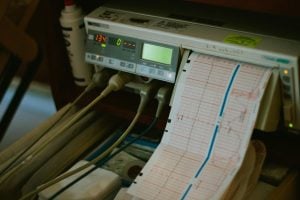While they may seem like an obvious issue to avoid, finding and solving duplication issues can be difficult. You can use Wireshark to scroll through, filter, and isolate duplicate issues, but it could take a couple of hours.
Except if you’re an OptigoVN user. Just upload a PCAP file to OptigoVN, and if there are duplicates on your network you’ll see it under the Diagnostic Checks.
Check out this video walkthrough to see how fast you can diagnose and identify duplicate network IDs for routers, duplicate BBMDs, and duplicate device IDs using OptigoVN and Site Scope+ intuitive contextual results.
Duplicates can cause a range of issues across your BACnet system that can manifest in strange ways with seemingly no pattern:
- Communication failures: duplicates can cause conflicts, including data flowing to the wrong destinations or along the wrong routes, or devices disappearing then reappearing on your network. This leads to lost packets and data collisions.
- Device isolation: duplicate devices can become isolated from the rest of the network, or experience communication failure.
- Data integrity issues: inconsistencies and conflicting data results occur when duplicates try to report back to the same read request.
- Control malfunctions: automation and control programming will be disrupted by trying to communicate with two conflicting devices.
Duplicate Network Numbers: How They Happen
This error has to do with BACnet routers, specifically, a situation where two or more BACnet routers are claiming to be the correct router for the same network. Think of them like street names – If you have more than one street with the same name, you can’t properly identify where the package came from, and worse, you aren’t sure which street your package will be delivered to. No two routers can have the same network number anywhere on the network.
Duplicate BBMDs: How They Happen
A duplicate BBMD is normally caused by a setup issue, typically on a mixed vendor site. On a new site, the first vendor sets up multiple networks and connects them with BBMDs. A site upgrade or change takes place, a new vendor wins the contract, and they add devices to each network. In order to connect the devices, they put a BBMD on each subnet. This can continue, resulting in two, three or more BBMDs on each subnet, and double or triple the traffic. There should only be one BBMD per network.
Duplicate Device IDs: How They Happen
Duplicate Device IDs could arise in several ways — perhaps someone copy-pasted the configurations from one subnet router to another, or a preset wasn’t updated — but the result is that you have two or more devices with the same ID. No two device IDs can be the same anywhere on the network.
Looking for more detailed information on duplicates and how to fix them? We’ve got your covered. Check out our deep dive into duplication issues, their causes, and their fixes.






